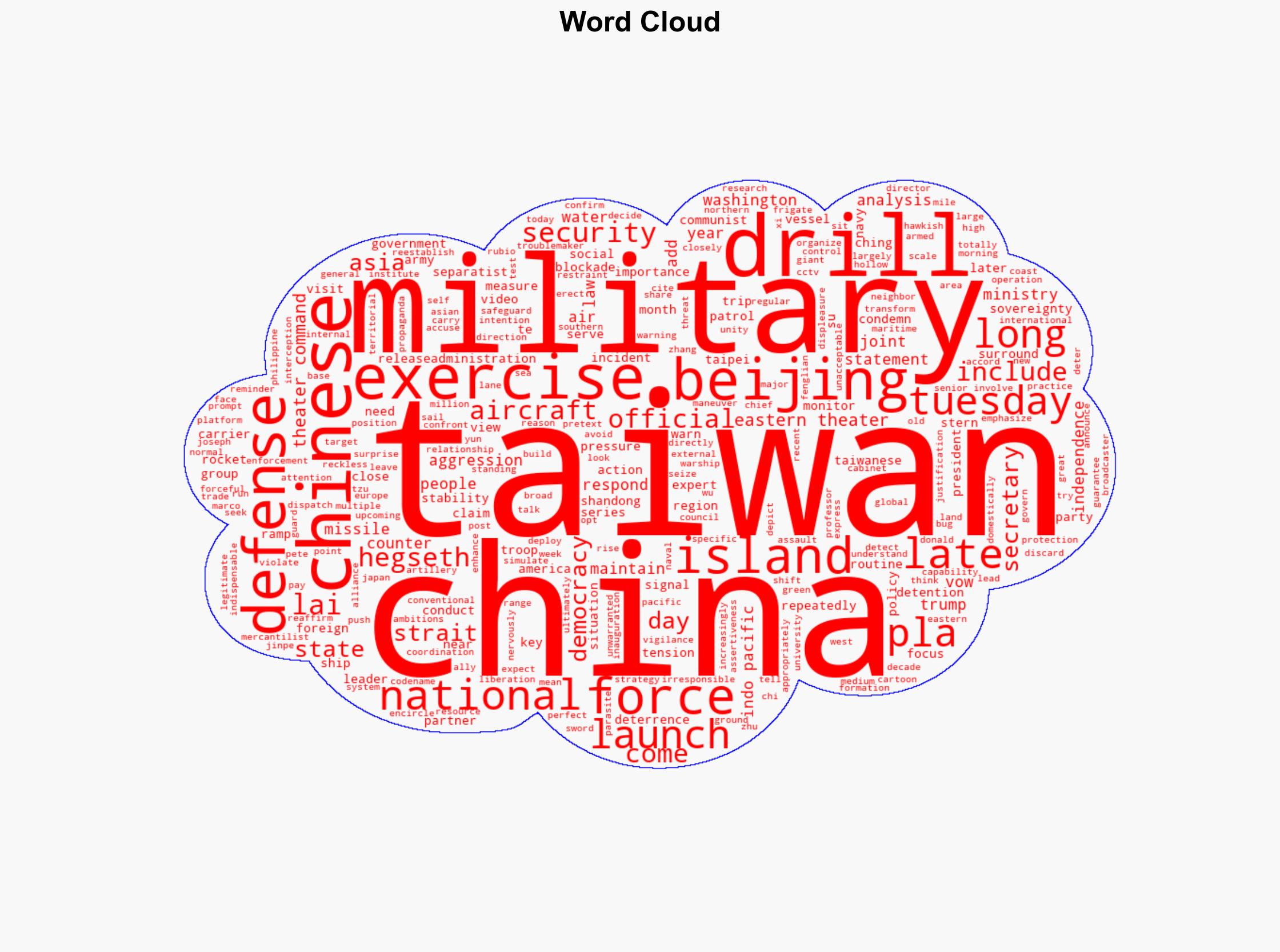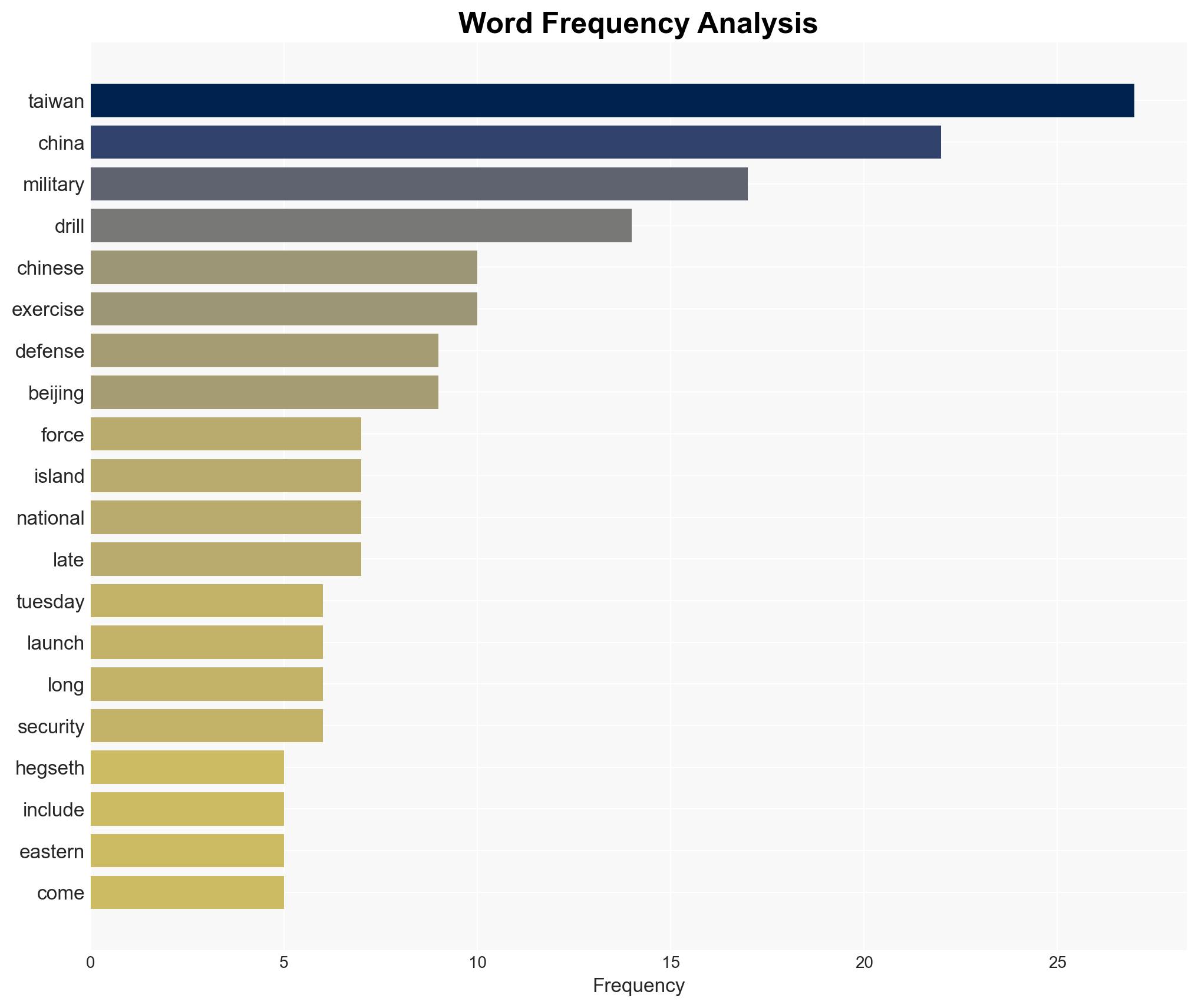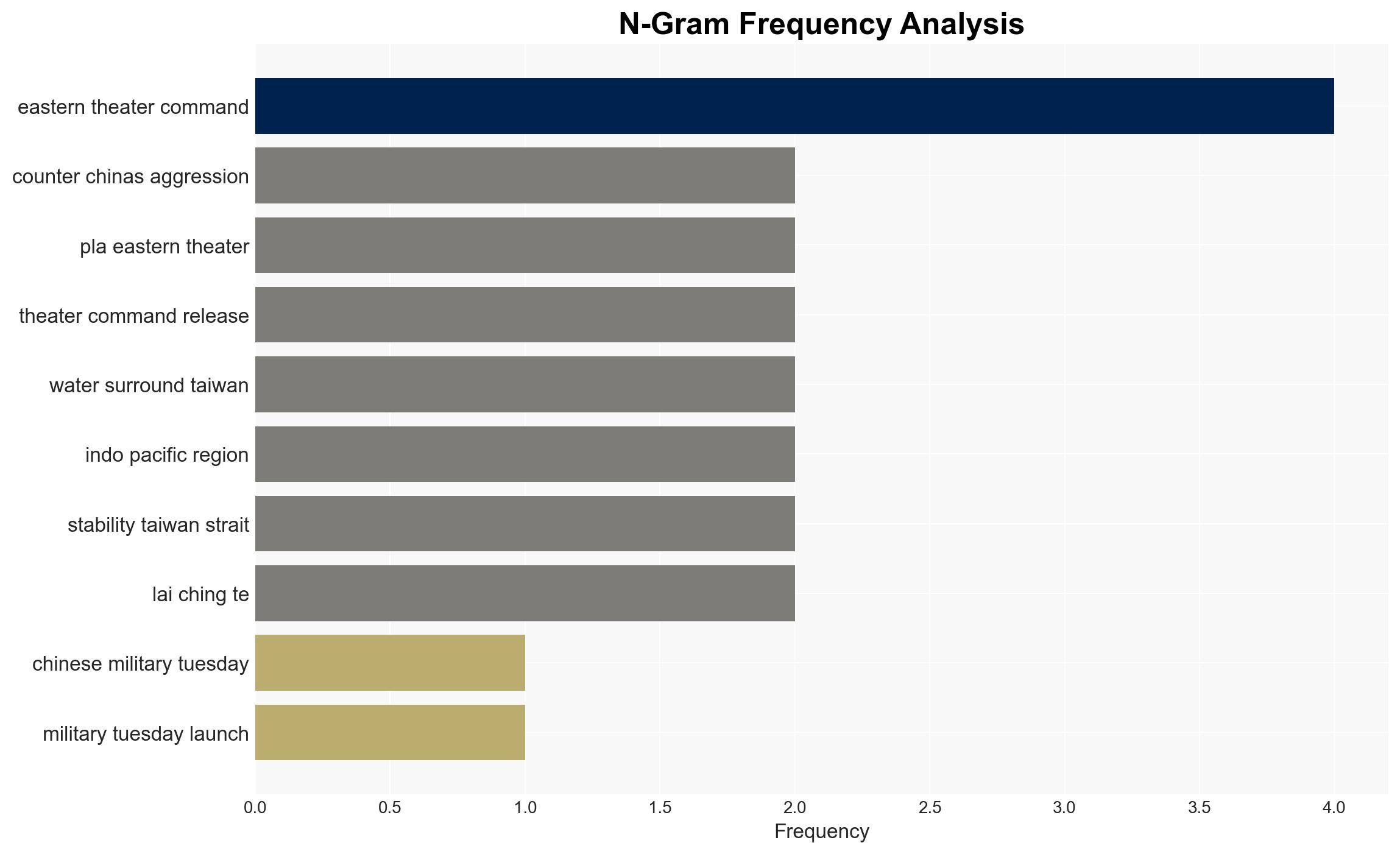China Launches Large-Scale Military Drills Around Taiwan – Time
Published on: 2025-04-01
Intelligence Report: China Launches Large-Scale Military Drills Around Taiwan – Time
1. BLUF (Bottom Line Up Front)
China has initiated extensive military exercises around Taiwan, involving multiple branches of its armed forces. These drills serve as a stern warning against Taiwan’s independence movements and demonstrate China’s military capabilities. The exercises coincide with heightened geopolitical tensions, particularly concerning the United States’ strategic focus on the Indo-Pacific region. Immediate attention is required to assess potential threats to regional stability and international relations.
2. Detailed Analysis
The following structured analytic techniques have been applied for this analysis:
General Analysis
China’s military exercises involve the army, navy, air force, and rocket force, indicating a comprehensive approach to demonstrating military strength. The drills include maneuvers such as assaults on maritime and ground targets, blockades of key sea lanes, and testing of joint operational capabilities. These actions are framed as legitimate measures to safeguard China’s sovereignty and national unity. The timing of these exercises aligns with visits by key U.S. officials to Asia, suggesting a strategic response to perceived external pressures.
3. Implications and Strategic Risks
The military drills pose significant risks to regional stability, potentially escalating tensions between China and Taiwan. The exercises could disrupt international trade routes and impact global economic interests. Additionally, the drills may strain diplomatic relations between China and countries supporting Taiwan’s democratic governance. The presence of advanced military assets, such as the aircraft carrier Shandong, underscores China’s commitment to asserting its claims over Taiwan, raising concerns about potential military confrontations.
4. Recommendations and Outlook
Recommendations:
- Enhance diplomatic efforts to de-escalate tensions between China and Taiwan, involving multilateral discussions with regional stakeholders.
- Strengthen regional alliances and partnerships to counterbalance China’s military assertiveness in the Indo-Pacific region.
- Invest in technological advancements and intelligence capabilities to monitor and respond to military developments in the area.
Outlook:
Best-case scenario: Diplomatic negotiations lead to a de-escalation of military activities, maintaining regional stability and open communication channels.
Worst-case scenario: Military confrontations occur, resulting in significant disruptions to international trade and heightened geopolitical tensions.
Most likely outcome: Continued military posturing by China, with periodic exercises serving as a tool for strategic signaling, while diplomatic efforts aim to manage tensions.
5. Key Individuals and Entities
The report mentions significant individuals such as Pete Hegseth, Donald Trump, Joseph Wu, and Marco Rubio. These individuals are involved in the geopolitical dynamics surrounding the military drills and the broader strategic focus on the Indo-Pacific region.




